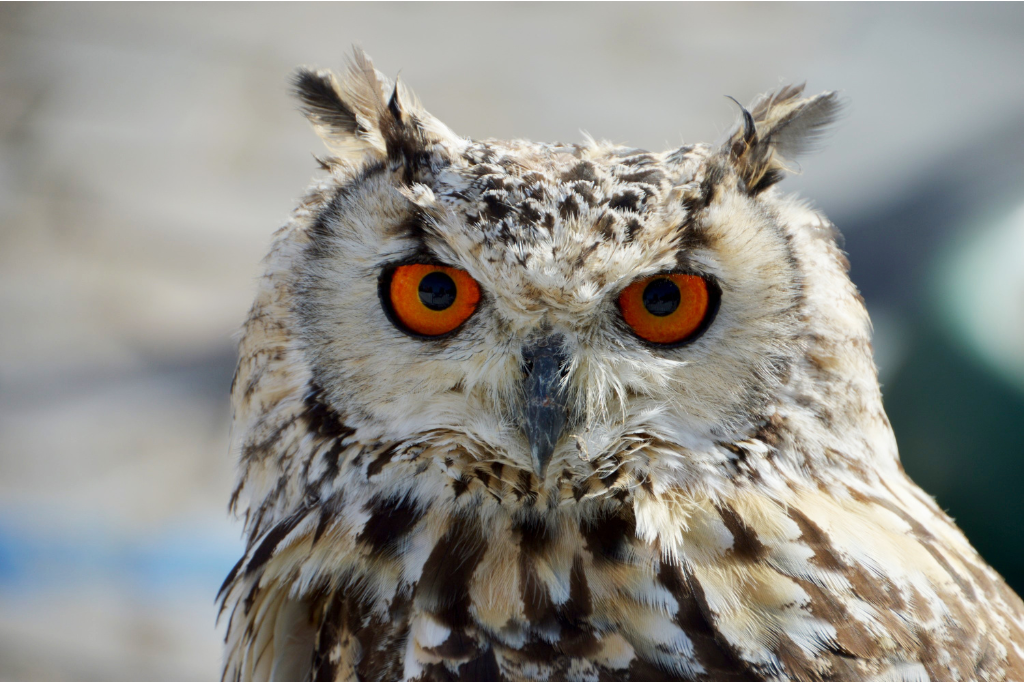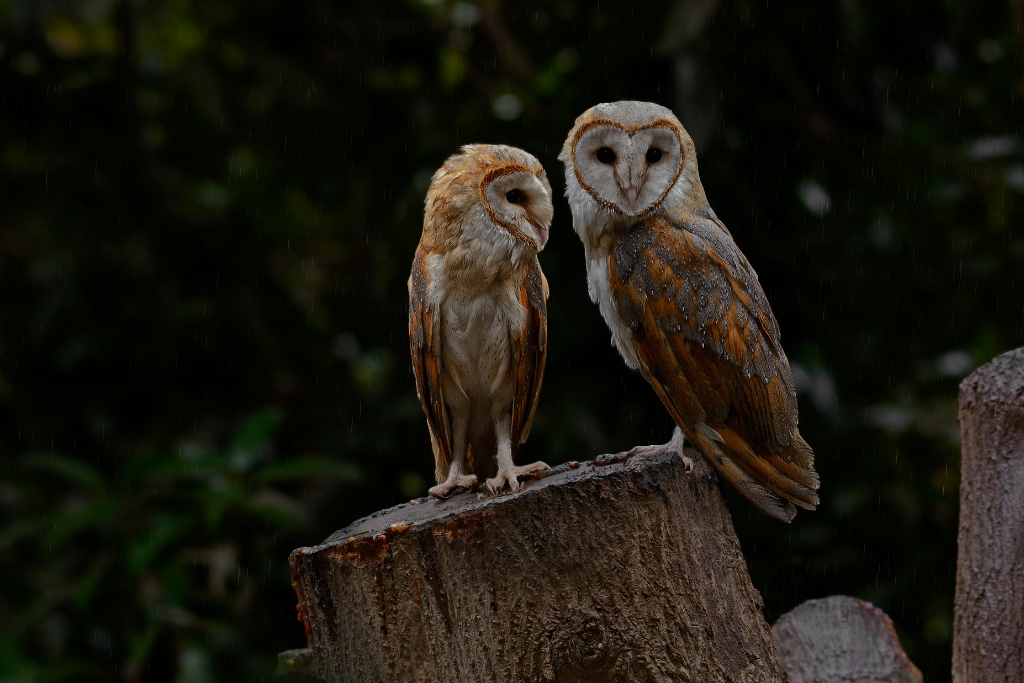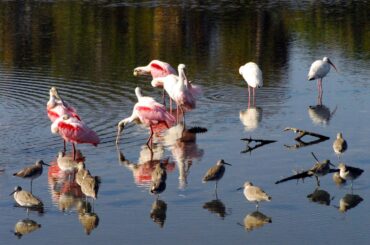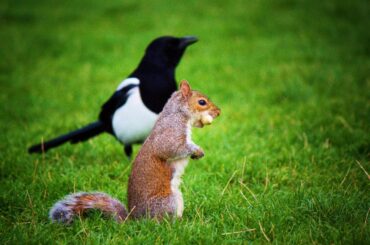Have you ever wondered why owls hoot at night? What makes them so active when the rest of the world is asleep? Well, it turns out that owls have a special reason for hooting in the dark.
Owls are nighttime birds, meaning they are more active at night. Hooting is how they communicate with other owls and stake their claim on their territory. Each owl has its unique hoot, like a special language just for them.
By hooting, owls let other owls know where they are and that they are ready to defend their space.
By studying their hoots, researchers can discover how many owls are in a particular area and how they interact with each other. This knowledge helps us protect owls and their habitats, ensuring they have a safe place to live and thrive.
Next time you hear an owl hooting at night, remember that it’s their way of saying, “This is my home!”
Why Do Owls Hoot?

Have you ever wondered why owls hoot? Well, there are three main reasons behind their hooting behavior.
Communication
Owls use hooting to talk to each other and communicate important messages. Each owl has its unique hoot, like a special language just for them. They hoot to let other owls know where they are and to claim their territory.
Sometimes, owls even have conversations with each other through their hoots. They can communicate things like warnings and greetings, and they even show their happiness or anger. When you hear an owl hooting at night, they’re having a conversation with their owl friends!
Territory Defense
Hooting is important for owls when it comes to defending their territories. You see, owls are very protective of the places they call home. By hooting loudly, they let other owls know that a particular area belongs to them. It’s like putting up a big sign that says, “This is my territory!”
Other owls hear the hoots and understand they should stay away and find their own space. Owls are pretty tough when it comes to protecting their territory. They might even have “hoot-offs” with other owls, where they hoot back and forth to show who’s boss and ensure everyone knows who’s in charge.
Mating Rituals

Hooting also plays a special role in owl courtship and breeding. When owls want to find a mate, they use their hoots to attract the attention of potential partners. They’re saying, “Hey, I’m here and looking for love!”
The male owl usually starts the hooting, and the female owl responds if she’s interested. They take turns hooting at each other like a romantic conversation. If they like each other’s hoots, they might meet up and start a family together.
Hooting helps owls find their special someone and continue the circle of life by having baby owlets. It’s their way of starting a family and growing the owl population!
How Long Do Owls Hoot at Night?
Owls can hoot at night for different lengths, depending on various factors. Some owls may hoot for just a few minutes, while others can hoot for hours. It all depends on the species of owl and the behavior of each owl.
3 Factors That Can Influence the Length of Hooting:
- Species: Different owl species have different hooting habits. Some species are known for shorter hooting sessions, while others are known for longer ones.
- Individual Owl Behavior: Like people, owls have their personalities and habits. Some owls might be more talkative and hoot longer, while others prefer shorter hooting sessions. Each owl has its unique style of communication.
- Environmental Conditions: The environment can also influence how long owls hoot. During the breeding season or when defending their territory, owls might hoot for longer to attract a mate or ward off intruders.
When Do Owls Hoot?

Owls are most active in hooting during the nighttime. Owls are special birds called “nocturnal,” meaning they are awake and active when most other animals are sleeping. They have amazing adaptations that help them see and hunt in the dark.
At night, owls prefer to hoot to communicate with other owls and establish their territory. They use their hoots to let other owls know where they are and to claim their space. It’s like they’re having a conversation in the darkness!
Their hooting can echo through the quiet night as they search for mates, warn intruders, and connect with other owls. So, if you ever go outside at night and hear the familiar sound of an owl hooting, know it’s their way of saying, “This is my time, and this is my home!”
Do All Owls Hoot?
While hooting is common for owls to communicate, not all owl species hoot similarly. Some owls have different vocalizations or may be less vocal overall compared to others.
For example, the great horned owl is known for its deep and powerful hoots that can be heard from far away. It’s like a loud and distinctive “Hoo-hoo-hoo” sound. On the other hand, the barn owl doesn’t hoot as much. Instead, it makes screeching and hissing sounds. It’s like they have their own unique language to communicate.
Some owl species, like the northern saw-whet owl, have softer or higher-pitched hoots. They might not be as loud or noticeable as the hoots of other owl species. It’s fascinating to learn about the different voices of these amazing birds!
Final Thoughts
Scientists can uncover insights into owl interactions, mate finding, and territorial protection by studying their hooting behavior. This helps us appreciate and respect owls’ unique way of expressing themselves.
The hoots we hear at night are more than sounds; they represent owls’ connection, survival, and extraordinary existence. Let’s cherish and marvel at the wonder of owls and their captivating means of communication
FAQs
Is Hearing an Owl Hoot Good Luck?
No, while some people believe that hearing an owl hoot brings good luck, it’s mostly just a fun superstition or a belief in certain cultures.
Can Owls Hoot During the Day?
Yes, owls can hoot during the day, but they are more active and vocal during the night.
Are There Different Hooting Patterns Among Owl Species?
Yes, different owl species have their unique hooting patterns. Some owls have deep and resonant hoots, while others have softer and higher-pitched hoots.
Do Owls Hoot Year-Round?
Yes, owls can hoot year-round, but their hooting behavior can change depending on the season.





